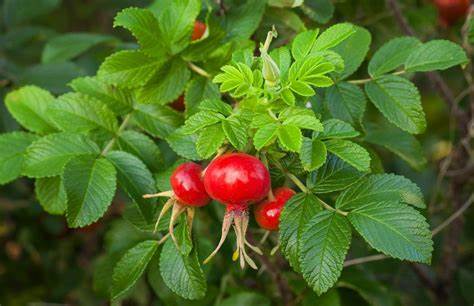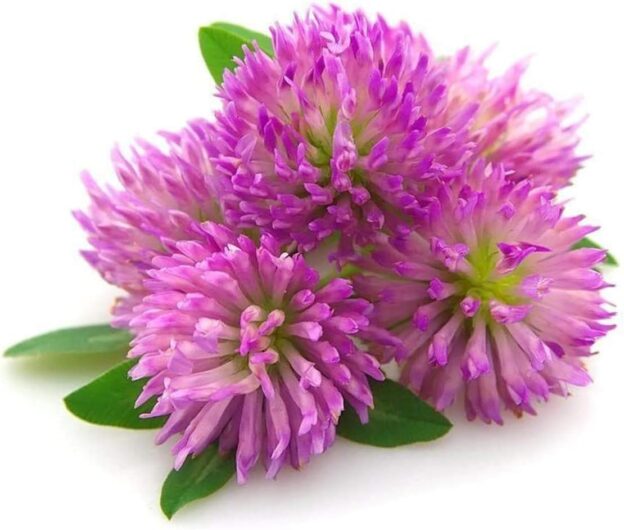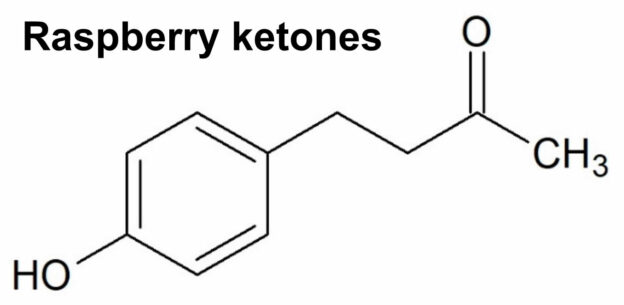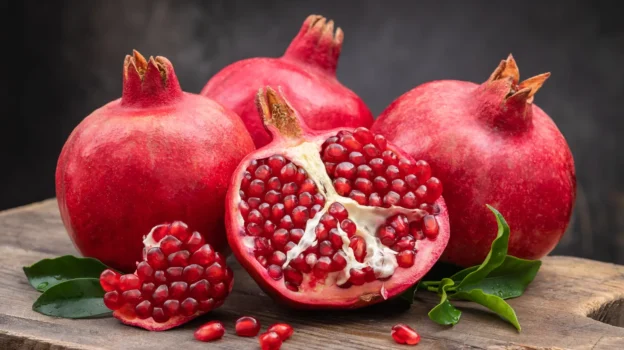Saw Palmetto is a natural remedy that has been used for years to treat various ailments. This small palm tree which is native to the southeastern United States, is known for its saw-like leaves and berries. The fruit from the saw palmetto tree has been used for centuries to improve bladder health, boost testosterone levels, and improve prostate health. In recent times, saw palmetto has become increasingly popular as a natural alternative to traditional medicine. From reducing hair loss and relieving menstrual pain to improving digestion and strengthening the immune system, saw palmetto has a wide range of health benefits. In this post, we will explore the various benefits of saw palmetto and how it can be used to improve your overall well-being.
1. Introduction to saw palmetto and its traditional uses
Saw palmetto, a small palm tree native to the southeastern United States, has gained significant attention in recent years for its potential health benefits. Historically, saw palmetto has been used by Native Americans for centuries to treat a variety of ailments. The berries of this palm tree are rich in nutrients and have been traditionally used to address urinary and reproductive issues.
One of the most well-known traditional uses of saw palmetto is for managing benign prostatic hyperplasia (BPH), a condition characterized by an enlarged prostate gland. Native Americans would consume the berries or create a tonic from them to alleviate urinary symptoms associated with BPH, such as frequent urination, weak urine flow, and nighttime awakenings.
In addition to its benefits for the prostate, saw palmetto has also been used as a natural remedy for other conditions. It has been employed to support healthy hair growth, particularly in cases of androgenic alopecia or male pattern baldness. The plant’s potential anti-inflammatory properties may contribute to its effectiveness in this regard.
Furthermore, saw palmetto has been utilized to address hormonal imbalances in women, particularly those related to polycystic ovary syndrome (PCOS). It may help regulate hormone levels and reduce symptoms such as irregular menstrual cycles and excessive hair growth.
While traditional uses of saw palmetto have been widely recognized, scientific research is still ongoing to fully understand its mechanisms of action and validate its potential health benefits. Nonetheless, the long history of traditional use and anecdotal evidence have piqued the interest of researchers and health enthusiasts alike, leading to an increased focus on exploring the therapeutic potential of this natural remedy.
In the following sections of this blog post, we will delve deeper into the specific health benefits of saw palmetto supported by scientific studies. We will explore its potential effectiveness in managing conditions such as BPH, hair loss, hormonal imbalances, and more. So, let’s uncover the fascinating world of saw palmetto and its potential role in naturally improving various ailments.
2. Understanding the key compounds in saw palmetto and their potential health benefits
To fully appreciate the health benefits of saw palmetto, it is essential to understand the key compounds found within this natural remedy and how they can potentially improve various ailments.
One of the primary active ingredients in saw palmetto is a group of fatty acids known as phytosterols. These phytosterols, including beta-sitosterol, stigmasterol, and campesterol, have been extensively studied for their potential therapeutic effects. Research suggests that these compounds may help reduce inflammation, promote prostate health, and alleviate urinary symptoms associated with conditions such as benign prostatic hyperplasia (BPH).
Saw palmetto also contains flavonoids, which are plant-based compounds with antioxidant properties. These flavonoids, including kaempferol and quercetin, possess anti-inflammatory and anti-cancer properties that may help protect against chronic diseases and support overall well-being.
Furthermore, saw palmetto contains a variety of essential oils, including cineole, limonene, and alpha-pinene. These oils contribute to the herb’s aromatic scent and have been shown to possess antimicrobial and anti-inflammatory properties. These properties may help combat infections and reduce inflammation in the body.
By understanding the key compounds found in saw palmetto and their potential health benefits, individuals can make informed decisions about incorporating this natural remedy into their wellness routine. It is important to note that while saw palmetto shows promise in supporting various ailments, it is always advisable to consult with a healthcare professional before starting any new herbal supplement regimen.
3. Saw palmetto’s role in promoting prostate health
Saw palmetto has gained significant attention for its potential role in promoting prostate health. This small palm tree, native to the southeastern United States, produces berries that have been used for centuries in traditional medicine.
One of the key health benefits of saw palmetto is its ability to support prostate health in men. The prostate gland is a small, walnut-sized organ that plays a vital role in male reproductive health. As men age, the prostate may undergo changes that can lead to discomfort and urinary issues.
Saw palmetto has been extensively studied for its potential to alleviate these symptoms. Research suggests that it may help reduce the size of an enlarged prostate, a condition known as benign prostatic hyperplasia (BPH). By inhibiting the activity of certain enzymes and hormones, saw palmetto may help regulate the growth of prostate cells and reduce inflammation, leading to improved urinary flow and decreased urinary symptoms associated with BPH.
In addition to its potential impact on prostate health, saw palmetto has also been studied for its anti-inflammatory and antiandrogenic properties. Some studies suggest that it may help lower levels of dihydrotestosterone (DHT), a hormone that contributes to hair loss and prostate enlargement. By blocking the conversion of testosterone to DHT, saw palmetto may help address these concerns.
It is worth noting that while saw palmetto shows promise in promoting prostate health, it is important to consult with a healthcare professional before starting any new supplement or treatment. They can provide personalized advice based on your specific health needs and ensure that saw palmetto is safe and appropriate for you.
In conclusion, saw palmetto has emerged as a natural remedy with potential benefits for prostate health. Its ability to reduce symptoms of BPH and support urinary function makes it a popular choice among men seeking alternative approaches to prostate care. As always, it is important to prioritize communication with healthcare professionals to make informed decisions about your health and well-being.
4. Exploring the efficacy of saw palmetto in managing urinary symptoms related to BPH
Saw palmetto, a small palm tree native to the southeastern United States, has long been recognized for its potential health benefits. One area where saw palmetto has gained significant attention is in managing urinary symptoms related to benign prostatic hyperplasia (BPH), a common condition affecting men as they age.
BPH is characterized by the enlargement of the prostate gland, leading to troublesome urinary symptoms such as frequent urination, weak urine flow, and the constant urge to urinate. While there are various conventional treatment options available, many individuals are seeking natural remedies like saw palmetto to alleviate these symptoms.
Studies have shown promising results regarding the efficacy of saw palmetto in managing urinary symptoms associated with BPH. The active compounds found in saw palmetto, including fatty acids and plant sterols, are believed to inhibit the production of certain hormones that contribute to prostate enlargement.
Research suggests that saw palmetto may help improve urinary flow, decrease nighttime urination, and reduce the overall symptoms of BPH. Additionally, it is considered a safe alternative to conventional medications, which often come with unwanted side effects.
However, it is important to note that while saw palmetto shows potential in managing urinary symptoms related to BPH, individual results may vary. Consulting with a healthcare professional is crucial before incorporating any new supplement or natural remedy into your routine, especially if you have underlying medical conditions or are taking other medications.
In conclusion, saw palmetto has emerged as a natural remedy for managing urinary symptoms associated with BPH. Its potential effectiveness and minimal side effects make it an appealing option for those seeking alternative approaches to their health. Nevertheless, always prioritize your overall well-being and consult with a healthcare professional to ensure the best course of action for your specific needs.
5. The potential of saw palmetto in reducing hair loss and promoting hair growth
Saw palmetto, a small palm tree native to the southeastern United States, has long been recognized for its potential health benefits. One area where saw palmetto has gained significant attention is in its ability to combat hair loss and promote hair growth.
Hair loss affects millions of people worldwide, causing not only physical changes but also emotional distress. Many individuals turn to synthetic treatments or invasive procedures in hopes of regaining their thick and lustrous locks. However, natural remedies like saw palmetto offer a compelling alternative.
Research suggests that saw palmetto may help prevent hair loss by inhibiting the enzyme 5-alpha-reductase, which is responsible for converting testosterone into dihydrotestosterone (DHT). DHT is a hormone that can contribute to hair loss in individuals with a genetic predisposition. By reducing DHT levels, saw palmetto may help slow down hair loss and preserve existing hair follicles.
Moreover, saw palmetto may also play a role in promoting hair growth. It is believed to have anti-inflammatory properties that can soothe the scalp and create a conducive environment for hair follicles to thrive. Additionally, it may enhance blood circulation to the scalp, ensuring essential nutrients reach the hair follicles, thereby promoting healthier and stronger hair growth.
While further research is still needed to fully understand the mechanisms and effectiveness of saw palmetto in combating hair loss, the existing evidence is promising. Many individuals have reported positive results after incorporating saw palmetto into their hair care routines, experiencing reduced hair shedding and improved hair thickness.
It’s important to note that saw palmetto is available in various forms, including supplements, oils, and shampoos. Before incorporating it into your hair care regimen, it is advisable to consult with a healthcare professional to determine the most suitable dosage and application method for your individual needs.
In conclusion, saw palmetto holds great potential as a natural remedy for reducing hair loss and promoting hair growth. Its ability to inhibit DHT production and provide anti-inflammatory effects makes it an attractive option for those seeking alternative solutions to combat hair loss. Consider exploring this fascinating botanical extract and unlock its potential benefits for your hair health.
6. Uncovering the anti-inflammatory properties of saw palmetto and its impact on inflammatory conditions
Saw palmetto, a small palm tree native to the southeastern United States, has long been recognized for its medicinal properties. Among its various health benefits, one particularly noteworthy attribute is its potent anti-inflammatory properties.
Inflammation is the body’s natural response to injury or infection, but chronic inflammation can contribute to the development of various health conditions. Saw palmetto contains several active compounds, including fatty acids and plant sterols, which have been found to possess anti-inflammatory effects.
Numerous studies have explored the impact of saw palmetto on inflammatory conditions such as prostate inflammation (prostatitis), urinary tract infections, and even respiratory conditions like asthma. Research suggests that the plant’s anti-inflammatory properties may help alleviate symptoms associated with these ailments.
In the case of prostatitis, saw palmetto has demonstrated the ability to reduce inflammation and relieve discomfort in the prostate gland. This can result in reduced urinary symptoms, such as frequent urination, weak urine flow, and pelvic pain.
Additionally, the anti-inflammatory effects of saw palmetto may extend to the urinary tract, where it can help combat infections. By reducing inflammation in the urinary system, saw palmetto may contribute to the prevention and treatment of urinary tract infections, offering a natural alternative to traditional antibiotics.
Moreover, emerging evidence suggests that saw palmetto may have promising implications for respiratory health. Inflammation plays a significant role in respiratory conditions such as asthma, and studies have shown that saw palmetto extract can reduce inflammation in the airways, potentially providing relief for asthma sufferers.
While further research is still needed to fully understand the mechanisms and potential benefits of saw palmetto’s anti-inflammatory properties, the existing evidence is encouraging. As a natural remedy, saw palmetto offers an alternative approach to managing inflammatory conditions, potentially reducing reliance on pharmaceutical interventions.
However, it is important to note that saw palmetto should be used under the guidance of a healthcare professional, especially if you are currently taking any medications or have pre-existing medical conditions. Consulting with a healthcare provider will ensure that saw palmetto is safe and appropriate for your specific situation.
In conclusion, saw palmetto’s anti-inflammatory properties make it a promising natural remedy for various inflammatory conditions. From prostate inflammation to urinary tract infections and respiratory ailments, the potential health benefits of saw palmetto continue to be unveiled, offering individuals an alternative option for managing these conditions in a more holistic manner.
7. Examining the potential of saw palmetto in managing hormonal imbalances and improving reproductive health
Saw palmetto, a small palm tree native to the southeastern United States, has gained significant attention for its potential health benefits. While it has been traditionally used to alleviate urinary tract symptoms and support prostate health in men, recent research suggests that saw palmetto may also play a role in managing hormonal imbalances and improving reproductive health.
Hormonal imbalances can occur in both men and women and can lead to a variety of health issues. For women, imbalances in estrogen and progesterone levels can cause irregular menstrual cycles, mood swings, and even fertility problems. In men, imbalances in testosterone levels can contribute to decreased libido, erectile dysfunction, and prostate issues.
Studies have shown that saw palmetto may help regulate hormone levels by inhibiting the activity of certain enzymes involved in the conversion of testosterone to dihydrotestosterone (DHT), a potent form of testosterone associated with hair loss and prostate enlargement. By reducing the conversion of testosterone to DHT, saw palmetto may help restore hormonal balance and alleviate symptoms associated with imbalances.
Furthermore, saw palmetto has been found to possess anti-inflammatory properties, which can be beneficial in managing conditions such as polycystic ovary syndrome (PCOS) and benign prostatic hyperplasia (BPH). PCOS is a common hormonal disorder in women that can cause irregular periods, cysts on the ovaries, and fertility issues. BPH, on the other hand, is a non-cancerous enlargement of the prostate gland that can lead to urinary problems in men.
Research suggests that the anti-inflammatory effects of saw palmetto may help reduce inflammation in the reproductive organs, thereby improving the symptoms associated with PCOS and BPH. Additionally, saw palmetto may also have a positive impact on sexual health by improving libido and sexual function in both men and women.
While further research is still needed to fully understand the mechanisms of action and potential benefits of saw palmetto in managing hormonal imbalances and improving reproductive health, the existing evidence is promising. If you are considering incorporating saw palmetto into your healthcare routine, it is important to consult with a healthcare professional to determine the appropriate dosage and ensure its safe use, especially if you have any underlying health conditions or are taking medications.
In conclusion, saw palmetto holds potential as a natural remedy for managing hormonal imbalances and improving reproductive health. Its ability to regulate hormone levels and reduce inflammation may offer relief to individuals struggling with conditions such as PCOS, BPH, and other related issues. As with any herbal supplement, it is crucial to seek professional guidance and make informed decisions about its use.
8. The role of saw palmetto in supporting urinary tract health and preventing urinary tract infections
Saw palmetto, a small palm tree native to the southeastern United States, has gained significant attention for its potential health benefits. While it is widely known for its role in promoting prostate health, saw palmetto also plays a crucial role in supporting urinary tract health and preventing urinary tract infections (UTIs).
UTIs are a common medical condition, particularly among women. They are caused by bacteria entering the urinary tract and multiplying, leading to uncomfortable symptoms such as frequent urination, burning sensation during urination, and lower abdominal pain. If left untreated, UTIs can progress and cause more severe complications.
Saw palmetto has been recognized for its anti-inflammatory properties, which can help reduce inflammation and irritation in the urinary tract. It contains various active compounds, including fatty acids and phytosterols, which contribute to its therapeutic effects. These compounds work together to inhibit the growth of bacteria and reduce the adherence of bacteria to the urinary tract walls, preventing the onset of UTIs.
Additionally, saw palmetto has been found to have a positive impact on hormonal balance. Hormonal imbalances, particularly in the levels of dihydrotestosterone (DHT), can contribute to prostate enlargement and urinary problems in men. By inhibiting the conversion of testosterone to DHT, saw palmetto helps maintain a healthy prostate and supports optimal urinary function.
Research studies have shown promising results regarding the effectiveness of saw palmetto in preventing UTIs and supporting urinary tract health. However, it is important to note that while saw palmetto may be a beneficial natural remedy, it should not replace medical advice or prescribed treatments. Consulting with a healthcare professional is crucial for proper diagnosis and guidance on incorporating saw palmetto into your healthcare routine.
Incorporating saw palmetto into your daily regimen, either in the form of supplements or as part of a well-balanced diet, may provide a natural and holistic approach to supporting urinary tract health. However, it is always essential to prioritize overall wellness, maintain good hygiene practices, and seek appropriate medical care for any persistent or severe symptoms.
9. Potential side effects and precautions when using saw palmetto
While saw palmetto is generally considered safe for most people, it’s important to be aware of potential side effects and take necessary precautions before using it as a natural remedy. As with any herbal supplement, individual reactions may vary, and it’s always recommended to consult with a healthcare professional before incorporating saw palmetto into your wellness routine.
One potential side effect of saw palmetto is stomach discomfort or digestive issues. Some individuals may experience an upset stomach, nausea, or diarrhea when taking this supplement. If you notice any such symptoms, it’s advisable to reduce the dosage or discontinue use and consult a healthcare professional.
Another precaution to keep in mind is the potential interaction of saw palmetto with certain medications. Saw palmetto may interfere with the effectiveness of certain hormonal medications, such as oral contraceptives or hormone replacement therapy. It’s crucial to inform your healthcare provider about any herbal supplements you are taking to avoid any adverse effects or medication interactions.
Additionally, if you have a history of hormone-sensitive conditions such as breast or prostate cancer, it’s important to proceed with caution when using saw palmetto. While research on this topic is still limited, it’s advisable to discuss the potential risks and benefits with your healthcare provider before starting any supplementation.
Pregnant and breastfeeding women should also exercise caution and consult their healthcare provider before using saw palmetto, as its effects on these populations have not been extensively studied.
In conclusion, while saw palmetto offers promising health benefits for various ailments, it’s essential to be aware of potential side effects and take necessary precautions. Prioritize open communication with your healthcare provider, who can guide you on appropriate usage, dosage, and potential interactions to ensure your safety and well-being.
10. How to incorporate saw palmetto into your wellness routine and finding high-quality products
Incorporating saw palmetto into your wellness routine can be a game-changer when it comes to improving your overall health. From promoting prostate health to alleviating urinary symptoms, this natural remedy has gained popularity for its numerous benefits.
When it comes to finding high-quality saw palmetto products, there are a few key factors to consider. First and foremost, it’s important to look for products that are made from pure, organic saw palmetto berries. This ensures that you are getting the full spectrum of beneficial compounds without any harmful additives or fillers.
One way to ensure the quality of the product is by checking for third-party testing and certification. Reputable manufacturers often have their products tested by independent laboratories to validate the potency and purity of the ingredients. Look for certifications from organizations such as the U.S. Pharmacopeia (USP) or ConsumerLab.com to ensure that you are purchasing a reliable and trustworthy product.
Another important aspect to consider is the form in which the saw palmetto is available. It can be found in various forms such as capsules, extracts, or oils. Choosing the right form depends on your personal preference and the specific health concern you are targeting. For example, capsules are convenient for daily supplementation, while oils may be more suitable for topical applications.
Furthermore, it is advisable to do some research and read reviews from other consumers who have tried the product. Their feedback can provide valuable insights into the effectiveness and quality of different brands.
Remember, always consult with a healthcare professional before incorporating any new supplements into your routine, especially if you have any pre-existing medical conditions or are taking other medications. They can provide personalized guidance and ensure that saw palmetto is a safe and suitable option for you.
By following these guidelines and being mindful of the quality and form of the product, you can confidently incorporate saw palmetto into your wellness routine and experience the multitude of health benefits it has to offer.
We hope you found our blog post on the health benefits of Saw Palmetto informative and insightful. This natural remedy has been used for centuries to treat a variety of ailments, and its effectiveness is backed by scientific research. From promoting prostate health to alleviating hair loss, Saw Palmetto offers a range of potential benefits. Whether you’re looking for a natural alternative to traditional medicine or simply interested in exploring new remedies, Saw Palmetto may be worth considering. Remember to consult with a healthcare professional before incorporating any new supplements into your routine. Here’s to your health and wellness journey!
——————————















